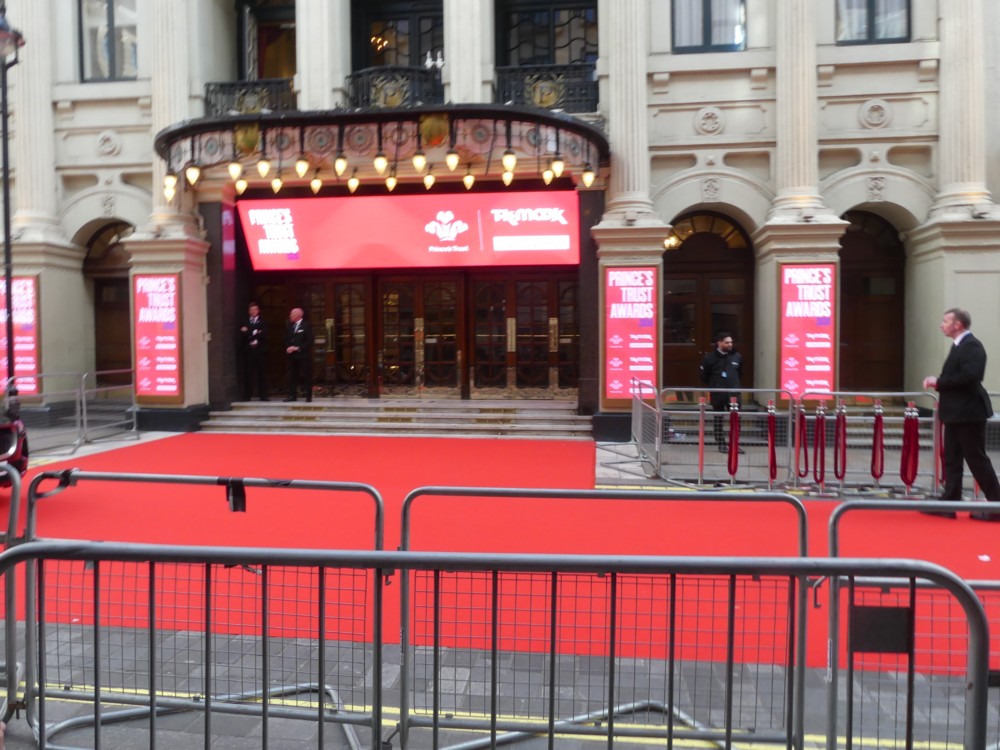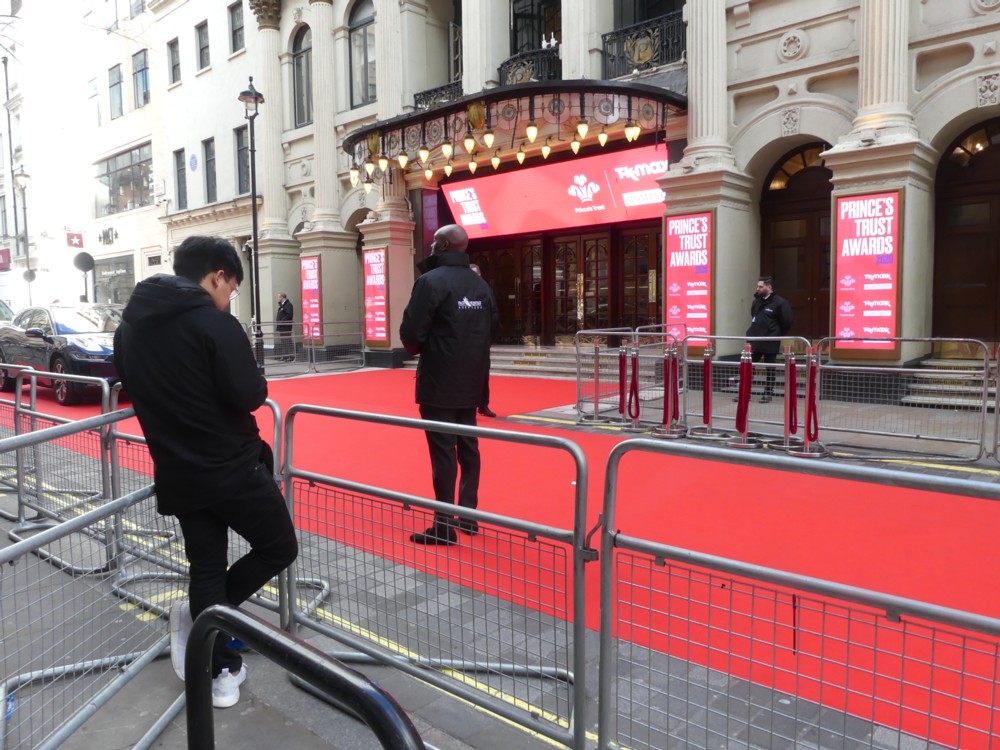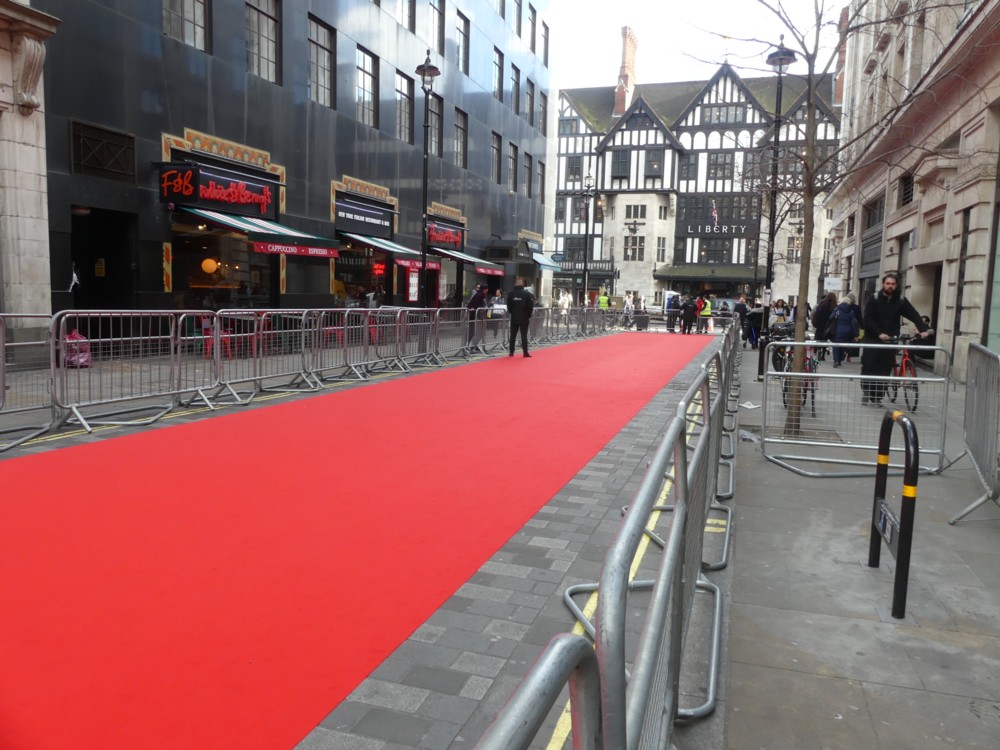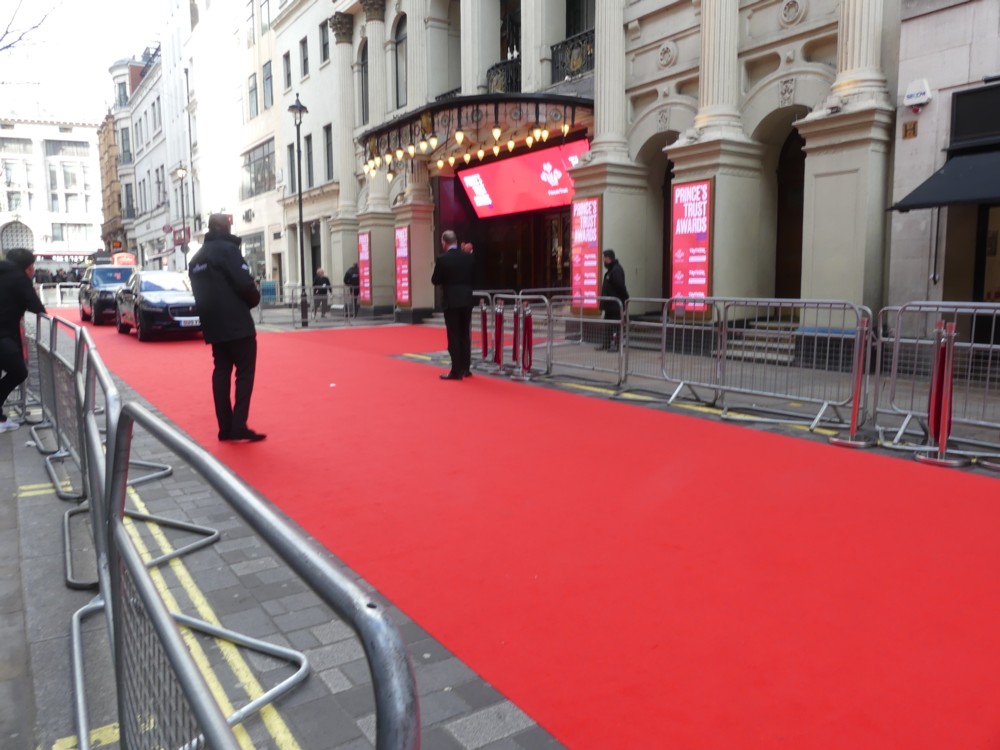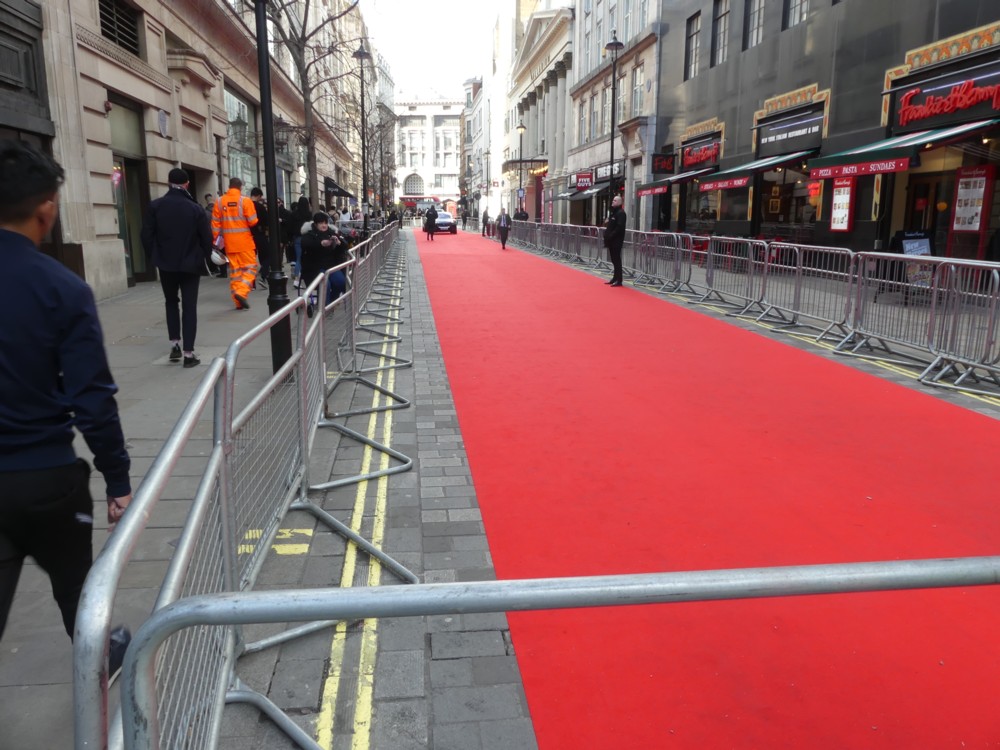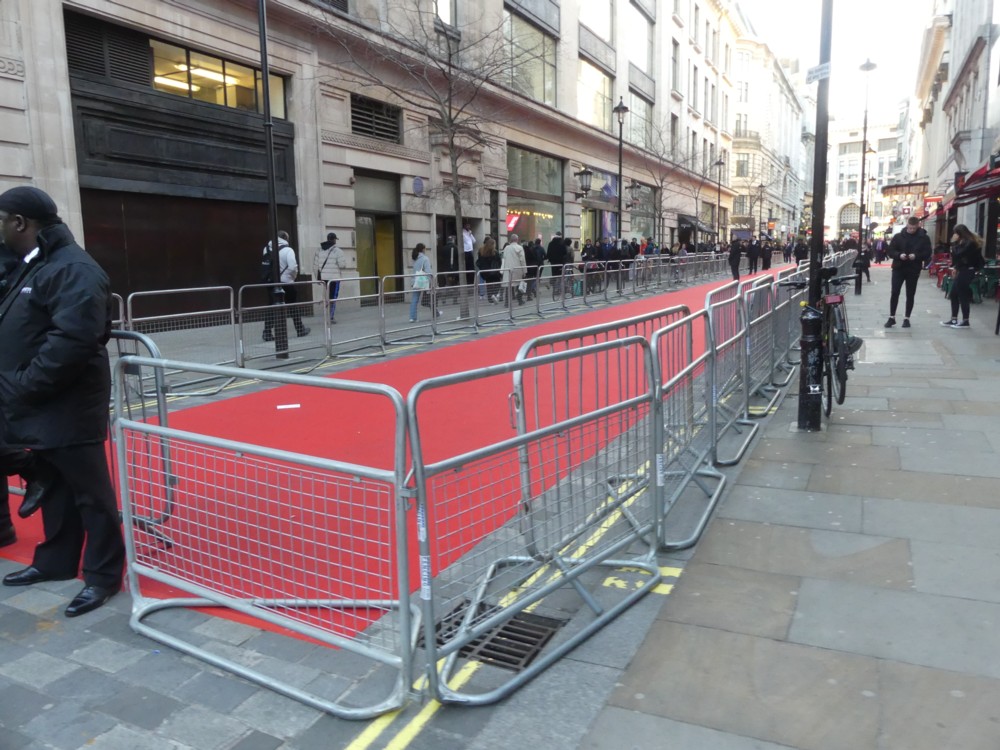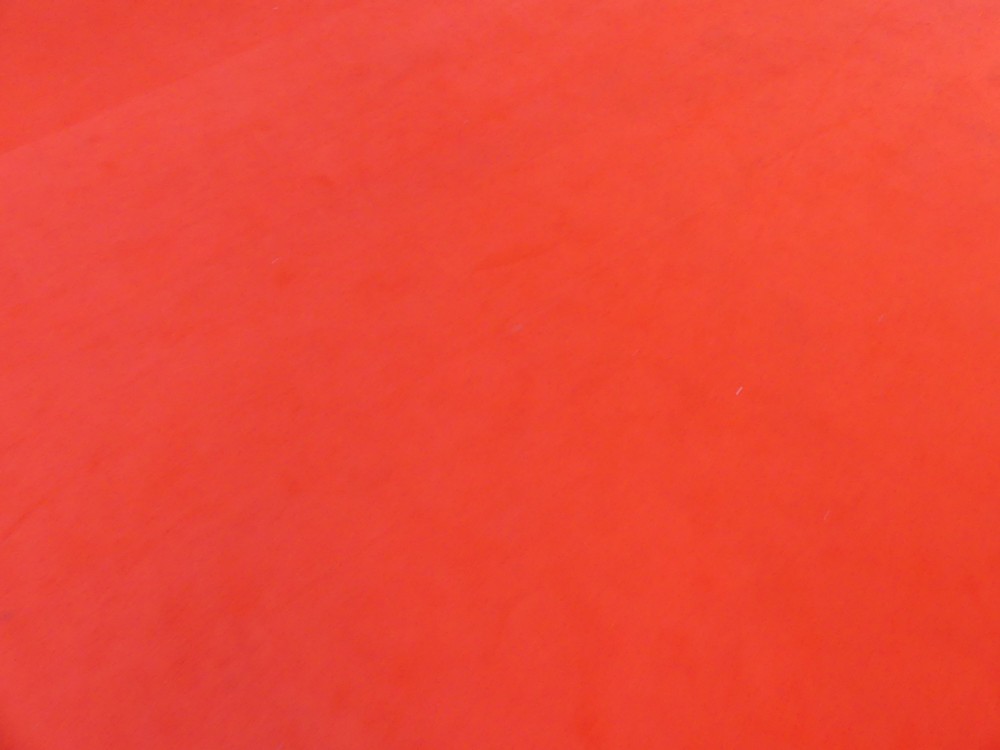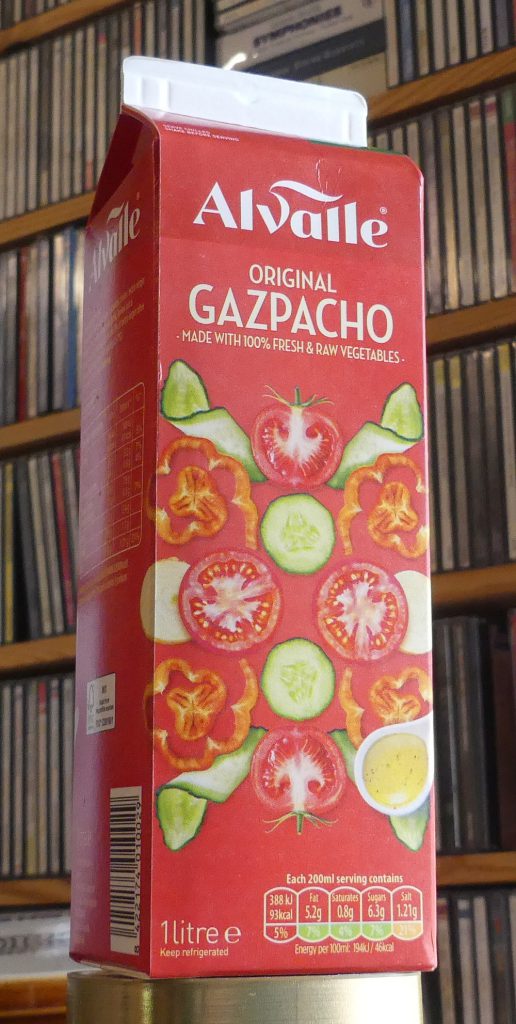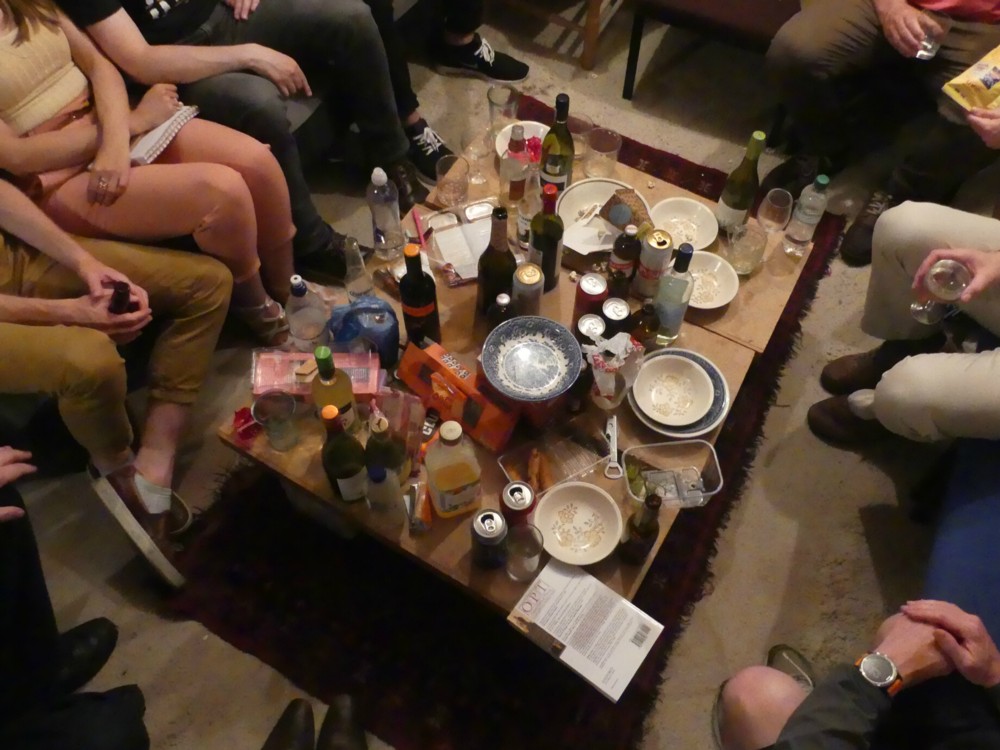Exactly a week ago, I spent my last day before You Know What erupted all over us, wandering around London, before attending an amazing chamber music concert at the Wigmore Hall.
During these wanderings, I encountered a red carpet, outside the London Palladium, in Argyll Street. Normally when you see a red carpet like this red carpet, you also see stars of stage and screen prancing about on it. But there is also something appealing about just seeing the red carpet, starless. Like this:
As you can see, it took me a while to feel my way to the ideal view of this red carpet, the one that captures its full and complete spiritual essence after which no further photoing was necessary. But if I just showed that final photo, all you would would have seen would have been pure spiritual essence. The mere carpetness of the carpet might not have come across. So I supplied all the other photos I photoed, to provide context.
My camera was more interested in the temporary railings close-up than it was in the signs announcing what the event was to which this red carpet was contributing. But I can tell you that this event was the National Prince’s Trust and TK Maxx & Homesense Awards 2020.
Congratulations to Phidizz, Alisa Ali, Alan Davies, Charleigh Morritt, Heathfield Community School, Kayanne Bond, Vicki Frost, and Akeme Cox, for being awarded, respectively, the HSBC UK Breakthrough Award, the Watches of Switzerland Group Young Ambassador of the Year award, the Ascential Educational Achiever of the Year award, the Delta Airlines Rising Star Award, the Dell Technologies Community Impact Award, the Homesense Young Achiever of the Year award, the Natwest Enterprise Award, and the Global Aga Khan Foundation Prince’s Trust Award.




